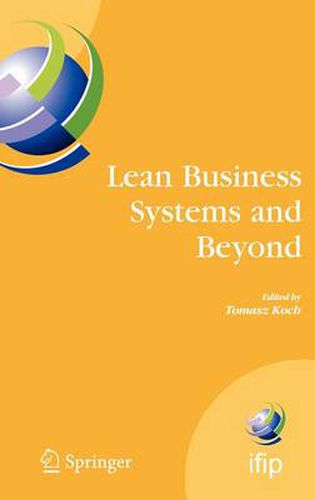Readings Newsletter
Become a Readings Member to make your shopping experience even easier.
Sign in or sign up for free!
You’re not far away from qualifying for FREE standard shipping within Australia
You’ve qualified for FREE standard shipping within Australia
The cart is loading…






This title is printed to order. This book may have been self-published. If so, we cannot guarantee the quality of the content. In the main most books will have gone through the editing process however some may not. We therefore suggest that you be aware of this before ordering this book. If in doubt check either the author or publisher’s details as we are unable to accept any returns unless they are faulty. Please contact us if you have any questions.
Lean Manufacturing has proved to be one of the most successful and most powerful production business systems over the last decades. Its application enabled many companies to make a big leap towards better utilization of resources and thus provide better service to the customers through faster response, higher quality and lowered costs. Lean is often described as eyes for flow and eyes for muda philosophy. It simply means that value is created only when all the resources flow through the system. If the flow is stopped no value but only costs and time are added, which is muda (Jap. waste). Since the philosophy was born at the Toyota many solutions were tailored for the high volume environment. But in turbulent, fast-changing market environment and progressing globalization, customers tend to require more customization, lower volumes and higher variety at much less cost and of better quality. This calls for adaptation of existing lean techniques and exploration of the new waste-free solutions that go far beyond manufacturing. This book brings together the opinions of a number of leading academics and researchers from around the world responding to those emerging needs. They tried to find answer to the question how to move forward from Spaghetti World of supply, production, distribution, sales, administration, product development, logistics, accounting, etc. Through individual chapters in this book authors present their views, approaches, concepts and developed tools. The reader will learn the key issues currently being addressed in production management research and practice throughout the world.
$9.00 standard shipping within Australia
FREE standard shipping within Australia for orders over $100.00
Express & International shipping calculated at checkout
This title is printed to order. This book may have been self-published. If so, we cannot guarantee the quality of the content. In the main most books will have gone through the editing process however some may not. We therefore suggest that you be aware of this before ordering this book. If in doubt check either the author or publisher’s details as we are unable to accept any returns unless they are faulty. Please contact us if you have any questions.
Lean Manufacturing has proved to be one of the most successful and most powerful production business systems over the last decades. Its application enabled many companies to make a big leap towards better utilization of resources and thus provide better service to the customers through faster response, higher quality and lowered costs. Lean is often described as eyes for flow and eyes for muda philosophy. It simply means that value is created only when all the resources flow through the system. If the flow is stopped no value but only costs and time are added, which is muda (Jap. waste). Since the philosophy was born at the Toyota many solutions were tailored for the high volume environment. But in turbulent, fast-changing market environment and progressing globalization, customers tend to require more customization, lower volumes and higher variety at much less cost and of better quality. This calls for adaptation of existing lean techniques and exploration of the new waste-free solutions that go far beyond manufacturing. This book brings together the opinions of a number of leading academics and researchers from around the world responding to those emerging needs. They tried to find answer to the question how to move forward from Spaghetti World of supply, production, distribution, sales, administration, product development, logistics, accounting, etc. Through individual chapters in this book authors present their views, approaches, concepts and developed tools. The reader will learn the key issues currently being addressed in production management research and practice throughout the world.